Introduction
Brief Overview
Diwali, often referred to as the “Festival of Lights,” is one of the most celebrated and eagerly awaited festivals in the Hindu calendar. Marking a triumph of light over darkness and good over evil, this auspicious occasion is not only significant religiously but also carries a deep cultural resonance. The festival is characterized by the illuminating of homes with lights, bursting of fireworks, feasting on festive treats, and the camaraderie of loved ones.
History of Diwali
Rooted deeply in ancient Indian scriptures, Diwali has been celebrated for thousands of years. Several stories from religious texts like the Ramayana and Puranas trace back to the origins of this festival. The most popular narrative recounts Lord Rama’s return to his kingdom Ayodhya after 14 years of exile, and defeating the demon king, Ravana. To celebrate their beloved prince’s return, the people of Ayodhya lit the entire city with diyas (clay lamps) – a tradition that has continued to the present day. However, this is just one of the many tales associated with the festival. Each region, and sometimes even communities within regions, have their unique stories and legends.
Globally Celebrated Festival
While Diwali holds a paramount place in the heart of every Indian, its allure isn’t just confined to India. Over the years, owing to global migration and cultural amalgamation, the festival has found its way to various corners of the world. Countries like Nepal, Sri Lanka, Trinidad & Tobago, Malaysia, Singapore, Australia, and Canada, among others, have significant Hindu populations that celebrate Diwali with great fervor. Moreover, in places like the United States and the UK, Diwali has been embraced by people of varied ethnicities, making it a global phenomenon.
Diwali Muhurat for 2023
The Importance of Muhurat
In Hindu traditions, the concept of ‘Muhurat’ holds paramount significance. The term ‘Muhurat’ refers to an auspicious time or moment chosen to initiate an event or occasion. The belief stems from Vedic astrology, where it’s thought that commencing activities during favorable planetary positions ensures success, prosperity, and positive outcomes.
Muhurat of Diwali in 2023
For 2023, the Diwali Muhurat is as follows:
Dhanteras Date- November 10, 2023 (Friday)
Choghadiya:
- Morning: Chal 6:44 to 8:09, Labh 8:09 to 9:33, Amrit 9:33 to 10:58
- Afternoon: Shubh 12:22 to 1:47, Chal 4:36 to 6:00
- Night: Labh 9:21 to 10:47
Ascendant Scorpio: Morning 7:16 to 9:31, Abhijit 11:59 to 12:45
Ascendant Aquarius: Afternoon 1:26 to 3:03, Godhuli 4:30 to 6:10
Ascendant Taurus: Evening 6:00 to 8:21
Ascendant Leo: Night 12:50 to 2:58
Roop Chaudas/ Choti Diwali/ Narak Chaturdashi Date- November 11, 2023 (Saturday)
Choghadiya:
- Morning: Shubh 8:09 to 9:33, Chal 12:22 to 1:47
- Afternoon: Labh 1:47 to 3:11, Amrit 3:11 to 4:46
- Night: Labh 6:00 to 7:36, Shubh 9:11 to 10:47, Amrit 10:47 to 12:23
Ascendant Scorpio: Morning 7:13 to 9:27, Abhijit 11:59 to 12:45
Ascendant Aquarius: Afternoon 1:22 to 3:00, Godhuli 4:30 to 6:10
Ascendant Taurus: Evening 6:17 to 8:17
Ascendant Leo: Night 12:47 to 2:55
Lakshmi Puja Date- November 12, 2023 (Sunday)
Choghadiya:
- Morning: Chal 8:00 to 9:34, Labh 9:34 to 10:58, Amrit 10:58 to 12:22
- Afternoon: Shubh 1:47 to 3:11
- Night: Shubh 5:59 to 7:34, Amrit 7:35 to 9:11, Chal 9:11 to 10:47
Ascendant Scorpio: Morning 7:09 to 9:23, Abhijit 11:59 to 12:45
Ascendant Aquarius: Afternoon 1:18 to 2:55, Godhuli 4:30 to 6:10
Ascendant Taurus: Evening 6:13 to 8:13
Ascendant Leo: Night 12:43 to 2:51
Benefits of Performing Rituals at Specific Times
Time, in Hindu traditions, is not just a linear progression; it’s a cosmic dance of energies. Initiating rituals during a Muhurat is akin to sowing seeds in fertile soil – it promises better outcomes, growth, and blessings. The intertwining of energies during Diwali, especially during the specified Muhurat, is believed to enhance the power and impact of prayers. This belief in timing ensures that the prayers reach the deities in their most benevolent form, bringing forth their blessings in abundance.
The Five Days of Diwali, Rituals and Their Importance
Day 1: Dhanteras

Dhanteras Rituals and Significance
Dhanteras heralds the beginning of Diwali, a day of fortune and well-being. It is inextricably linked to Lord Dhanvantari, the Hindu god of medicine and an incarnation of Vishnu, who is believed to have emerged from the ocean during the churning of the milky seas, holding the elixir of immortality. This day is auspicious for buying metal objects; new utensils purchased are symbolic of good luck.
The day starts with the cleaning of homes, which are then adorned with rangolis, bright lights, and oil lamps. In the evening, families perform a ritualistic puja to honor Lord Dhanvantari. Offerings include sweets, flowers, and traditional delicacies.
How to Perform Dhanteras Puja at Home
- Begin by cleaning a small table or platform to place the deities.
- Lay a red cloth and place idols or images of Lord Dhanvantari, Goddess Lakshmi, Lord Kuber, and Lord Ganesha.
- Light diyas, incense sticks, and offer flowers, sweets (particularly traditional Indian sweets like ‘Barfi’), and fruits.
- Recite the Dhanvantari Mantra: “Om Dhan Dhanvantaraye Namah” and offer a silent prayer for the health and well-being of your family.
- Conclude the puja by performing the aarti for the deities.
Day 2: Choti Diwali/ Narak Chaturdashi
Origin & Significance of Narak Chaturdashi
A day before the main festival, Choti Diwali, also known as Naraka Chaturdashi, is observed. It’s a day that commemorates the victory of good over evil, specifically the victory of Lord Krishna over the demon Narakasura. As per Hindu legends, Narakasura, the demon king, was causing mayhem, capturing kingdoms and imprisoning their princesses. When his audacity reached its peak, Lord Krishna intervened. With the help of his wife, Satyabhama, Lord Krishna defeated and killed Narakasura. To commemorate this victory, earthen lamps were lit, and the day became known as Narak Chaturdashi. It’s believed that taking an early morning bath, before sunrise, on this day can cleanse one of all sins, akin to visiting a holy pilgrimage.
Rituals to follow on Narak Chaturdashi
- A special bath ritual known as ‘Abhyang Snan’ is performed. Ubtan, a paste made of sesame oil, rose water, and gram flour, is applied to the body before taking a bath. It’s believed this ritual purifies both mind and body.
- Since it’s the day Narakasura was defeated, people light firecrackers to celebrate the victory of light over darkness.
- Homes are illuminated with diyas, and rangolis are drawn to welcome the forthcoming main Diwali celebrations.
Day 3: Lakshmi Puja

Why should you perform Lakshmi Puja?
The pinnacle of Diwali celebrations, Lakshmi Puja is a way to honor and celebrate Goddess Lakshmi – the divine symbol of prosperity, wealth, and well-being. This puja is especially significant as it’s believed that Goddess Lakshmi graces homes that are clean and illuminated with lamps. Hence, it is considered the most auspicious time to invite wealth and abundance into one’s life.
How to Perform Lakshmi Puja at Home (step-by-step guide)
Preparations: After a thorough cleaning, homes are adorned with rangoli, marigold flowers, and oil lamps. The sacred altar for the puja is arranged with an idol or picture of Goddess Lakshmi, alongside Lord Ganesha – as He is always worshiped first in any Hindu ritual.
- Begin with meditation to purify your mind and surroundings.
- Remember Lord Ganesha with chants and mantras, seeking his blessings for the removal of obstacles and for a successful puja.
- Place fresh flowers, sweets, and fruits before the deities.
- Pray to Goddess Lakshmi by reciting the Shri Suktam, a set of Vedic verses in dedication to her.
- Offerings like red thread, vermilion, and turmeric are made to the goddess.
- Diyas with ghee are lit, symbolizing the dispelling of darkness and ignorance.
- Conclude the puja by singing the Lakshmi Aarti, a song praising her virtues.
The belief is that the brighter and cleaner a home is on this night, the more likely it is for Lakshmi to bless the household with her presence, ushering in another year of prosperity.
Day 4: Bhai Dooj
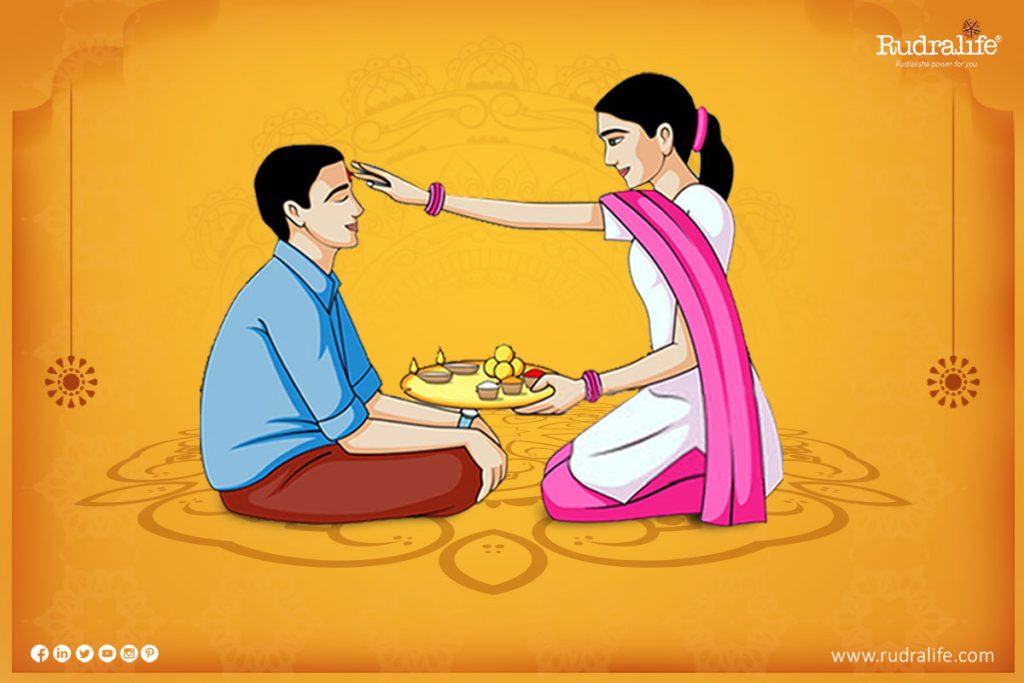
The festival of Bhai Dooj represents the bond of affection between brothers and sisters. Coming right after the festive fervor of Diwali, it stands as a testament to familial love, reminiscent of the Raksha Bandhan festival.
Story behind Bhai Dooj
The origins of Bhai Dooj trace back to a legend involving the God of Death, Yama, and his sister Yamuna. Yama visited his sister on this day, who welcomed him with an aarti and applied a vermilion mark on his forehead. Touched by her love and gestures, Yama blessed her, stating that any brother who receives an aarti and tilak from his sister on this day would never be thrust into hell. This is the reason sisters pray for the long life and prosperity of their brothers on this occasion.
How to celebrate Bhaidooj at home
- Sisters prepare a sacred altar for the ceremony.
- After the brothers are seated, the sisters perform an aarti, praying for their longevity and prosperity.
- Sisters apply a ’tilak’ – a colored mark, usually made of vermilion, on their brothers’ foreheads. This act is believed to ward off all evil from them.
- Exchanging gifts is an essential aspect of Bhai Dooj. Brothers present their sisters with gifts as a token of their love and in return for their blessings.
28 Best Bhai Dooj Gifts for brothers that they’ll love!
Day 5: Govardhan Puja/Annakut

Govardhan Puja is a significant event celebrated in the honor of Lord Krishna and Mount Govardhan. ‘Annakut’, meaning ‘mountain of food’, is also an integral part of this celebration.
Origin & Significance of Govardhan Puja
The legend goes that the people of Vrindavan used to worship Lord Indra, the god of rains, to bless them with timely monsoons. However, Lord Krishna, to break their blind faith in Indra, convinced them to worship Mount Govardhan instead, as it provided them with essential resources. Angered, Indra sent relentless rains to the region. Krishna, to protect the inhabitants, lifted Mount Govardhan on his little finger, providing shelter to all. This act made Lord Indra realize Krishna’s divinity, and he sought forgiveness. Thus, Govardhan Puja is a celebration of this divine act and the benevolence of Lord Krishna.
Rituals to follow for Govardhan Puja
- A miniature hillock, symbolizing Mount Govardhan, is made using cow dung or mud. It’s then adorned with flowers and decorated.
- Devotees walk around the hillock and offer prayers to Lord Krishna. They recite tales of his valor and sing devotional songs.
- A lavish feast is prepared, which consists of a large variety of vegetarian dishes. This mountain of food is then offered to Lord Krishna. It’s a way to show gratitude for the bounty of nature and God’s blessings.
- After the offerings, the food is distributed among the devotees as ‘Prasad’.
Diwali Customs and Traditions
Diwali’s charm is enhanced manifold by the myriad customs and traditions that accompany it. Rooted in history, spirituality, and culture, these customs offer profound insights and bring families and communities closer.
Diyas
Diyas, or clay oil lamps, are more than mere sources of light; they are symbols of the inner illumination we aspire for. As they banish the darkness outside, we’re reminded of our continuous journey to drive away ignorance and cultivate wisdom.
Science Behind Lighting Diyas
Beyond the spiritual, lighting diyas has tangible benefits. The flame consumes oxygen, reducing harmful gases and airborne particles. The warmth from the flames is known to sanitize the immediate surroundings, ensuring a fresh, germ-free environment during the festive season.
Cleaning The House
The act of cleaning isn’t merely about tidiness. It signifies preparation, a purification ritual before welcoming the divine into our homes.
Reason behind cleaning the house before Diwali
From a health standpoint, comprehensive cleaning ensures the removal of germs, allergens, and pests. This promotes better air quality and a more hygienic living space, crucial for well-being especially during seasonal changes.
Rangolis

Why do we draw Rangolis?
These intricate patterns, often drawn at entrances, serve as symbols of positivity, happiness, and a warm welcome. Traditional rangolis with rice flour were believed to invite birds, symbolizing harmony with nature. Modern rangolis use colored powders, flower petals, and even semi-permanent dyes. They’ve evolved from simple geometric designs to intricate artforms, reflecting the creativity of generations.
Beginner’s Guide to make Rangolis
Geometric designs or floral motifs can be an excellent start. Using stencils or premade patterns can also help beginners create beautiful rangolis effortlessly.
For Easy & Simple Diwali Rangoli Ideas, click here.
Firecrackers
Why do we light firecrackers during Diwali?
The use of firecrackers during Diwali carries historical significance. In ancient times, loud instruments, claps, and shouts were believed to drive away negative spirits. With the introduction of gunpowder and fireworks, which likely journeyed from China to India via trade routes, these bright and noisy displays became integrated into Diwali celebrations. Their vibrant bursts symbolized Lord Rama’s joyous return to Ayodhya and the overarching theme of light conquering darkness.
Over the years, firecrackers evolved from simple noise-makers to the vivid spectacles of color and sound we associate with Diwali today. However, as we grow more environmentally aware, it’s essential to merge tradition with responsibility. While the bursts of light have a historical place in our celebrations, today’s emphasis is on minimal environmental impact.
Eco-friendly Alternatives to Avoid Pollution
Opting for eco-friendly firecrackers during celebrations is the best solution to reduce air and noise pollution. Moreover, some communities have even begun hosting collective firework displays, reducing the overall number of firecrackers used while still allowing everyone to partake in the beauty of the tradition.
Popular Diwali Delicacies

Diwali, celebrated with gusto, is also a culinary carnival. As families come together, every state of India brings its unique flavor to the table:
Maharashtra
Poha Chiwda’, a spicy-sweet snack made from flattened rice, and ‘Shankarpali’, sweet diamond-shaped fried biscuits, are popular. ‘Puran Poli’, a sweet flatbread stuffed with chana dal and jaggery, is a festive favorite.
Gujarat
The state is renowned for its ‘Ghari’, a type of sweet, especially consumed during Diwali. Savory items like ‘Mathiya’ and ‘Farsi Puri’ are also quintessential to the festival.
West Bengal
‘Sandesh’, a dessert made from fresh paneer or chhena, is sculpted into various shapes and flavored with cardamom or saffron. ‘Rasgulla’ and ‘Gulab Jamun’ are other delectable additions.
Punjab
The hearty ‘Pinni’, made from wheat flour, ghee, and dry fruits, is a must-have. ‘Atte ka Halwa’ and ‘Panjeeri’ are other delicious offerings.
South India
‘Mysore Pak’, a ghee-laden delicacy, and ‘Murukku’, a crunchy spiral snack, are relished. ‘Badushah’ and ‘Boondi Laddoo’ are other sought-after sweets.
Rajasthan
‘Ghevar’, a disc-shaped sweet made from flour and soaked in syrup, is synonymous with Diwali in this state. ‘Feeni’ and ‘Besan Chakki’ also find their way into homes.
The diverse platter of Diwali delicacies underscores India’s rich culinary heritage and the way food becomes an expression of love, joy, and togetherness during festivities.
For those interested in quick and easy-to-make Diwali snack preparations, click here.
Gifts
Gifting, during Diwali, embodies the spirit of generosity and the joy of sharing.
Best Gifts to give on Diwali
Traditional Gifts
Items like silver coins, idols of deities, especially those of Lord Ganesha and Goddess Lakshmi, and handcrafted artifacts are popular choices. Decorative items such as wall hangings, lanterns, and diyas are also cherished gifts.
Snacks & Savouries
Handcrafted chocolates, assortments of dry fruits, and beautifully packed boxes of traditional sweets are popular. Home-cooked snacks and sweets, wrapped with love, always hold special value.
Personal Care Items
Perfumes, skincare products, and wellness kits are becoming increasingly popular as gifts. They symbolize the wish for the recipient’s well-being.
Clothing and Accessories
New clothes are an integral part of Diwali. Gifting apparels, especially ethnic wear, is a common practice.
Donations and Charitable Gifts
The true essence of Diwali lies in spreading joy. Donating clothes, food, or essentials to the less fortunate or gifting anonymously (akin to the western concept of ‘Secret Santa’) brings forth the festival’s profound message of compassion and selflessness.
Spiritual Gifts
Beyond the tangible, consider gifting spiritual items. Rudraksha from Rudralife not only holds religious significance but also serves as a timeless reminder of the festival’s deeper spiritual meaning.
By gifting, we’re not just exchanging objects but sharing happiness, blessings, and goodwill. The act resonates with the festival’s core theme: spreading light and love in every corner.
Powerful Rudraksha for Diwali
As we seek divine blessings this Diwali, certain spiritual tokens carry profound significance, drawing positive cosmic energies into our lives. Among these are the Rudraksha beads, revered for their spirituality and their connection to the divine. Rudralife, your trusted source for authentic Rudraksha, offers a selection of powerful beads that resonate with Diwali’s spirit of prosperity, well-being, and new beginnings.
7 Mukhi Rudraksha for blessings of Mahalakshmi

Revered as a symbol of the goddess Lakshmi, the 7 Mukhi Rudraksha attracts wealth and prosperity. It is said to appease Saturn, removing obstacles and bringing success in business and career.
Devi Lakshmi Bracelet for Wealth

This elegant bracelet combines style and spirituality. Encircling your wrist with the divine 7 Mukhi Rudraksha, it keeps the blessings of Goddess Lakshmi, the deity of wealth, close, and serves as a daily reminder of her divine grace.
Lakshmi Cashbox to invite Prosperity

A unique spiritual keepsake, the Lakshmi Cashbox contains two beads of 7 Mukhi Rudraksha, believed to safeguard your assets and multiply wealth, perfect for placing in safes, cash boxes, or wealth corners.
Ganesh Lakshmi at Puja Place

Enrich your Puja room’s energy with the Ganesh Lakshmi, which harmoniously combines Ganesh Rudraksha and 7 Mukhi Rudraksha. It symbolizes the duality of obstacle removal and wealth attraction.
7 Mukhi Rudraksha Hanging for Stability

This spiritual hanging is designed to be placed in homes or vehicles. It’s not just an adornment but a blessing that provides protection, brings prosperity, and harmonizes the environment.
Ganesh Lakshmi Bandh to Overcome Hardships

This bandh seamlessly combines two 7 Mukhi beads with an 8 Mukhi bead. Drawing blessings from Goddess Lakshmi and Lord Ganesha, it promises abundance and the strength to overcome obstacles.
13 Mukhi Rudraksha for Good Fortune

Associated with Lord Indra Dev, the 13 Mukhi Rudraksha is a divine bead for charisma, attraction, and fulfillment of desires. Its rare energy is believed to bring charm, prosperity, and achievements in one’s life.
21 Mukhi Rudraksha for blessings of Lord Kuber

A rare and powerful bead, the 21 Mukhi Rudraksha channels Lord Kuber’s essence. Wearing it during Diwali ensures a path paved with prosperity and protection.
In this auspicious time, as homes light up with earthen lamps and hearts with hope and joy, choosing to bring home a Rudraksha is like inviting a part of the divine to dwell with you. These spiritual beads from Rudralife are more than mere objects; they are companions in your spiritual journey, promising a life of fulfillment, serenity, and prosperity.
Powerful Mantras To Chant During Diwali
As the festival of Diwali illuminates our surroundings with the radiant glow of diyas, it also offers a perfect moment to illuminate our inner selves. Mantras, the powerful sacred sounds of Hindu tradition, can help us in this quest, aligning us with divine energies and elevating our spiritual consciousness. As you engage in the rituals of Diwali, here are some mantras that you can imbue into your practice for a deeper connection with the divine:
Lakshmi Mantra
Mantra: “ॐ श्रीं महालक्ष्म्यै नमः”
Transliteration: “Om Shrim Maha Lakshmiyei Namah”
Significance: This mantra is dedicated to Goddess Lakshmi, the deity of wealth, prosperity, and abundance. Chanting this mantra is believed to attract wealth, success, and prosperity.
Gayatri Mantra
Mantra: “ॐ भूर्भुवः स्वः तत्सवितुर्वरेण्यं भर्गो देवस्य धीमहि धियो यो नः प्रचोदयात्”
Transliteration: “Om Bhur Bhuvah Swaha, Tat Savitur Varenyam, Bhargo Devasya Dhimahi, Dhiyo Yo Nah Prachodayat”
Significance: One of the most powerful mantras in Hinduism, the Gayatri mantra invokes the universal life force. Chanting this mantra is said to enhance wisdom, understanding, and spiritual enlightenment.
Panchakshari Mantra
Mantra: “ॐ नमः शिवाय”
Transliteration: “Om Namah Shivaya”
Significance: Dedicated to Lord Shiva, the destroyer in the Holy Trinity, this mantra is about surrendering to the divine and seeking inner peace. It aids in dispelling fear, dispelling ignorance, and aligning oneself with universal consciousness.
Ganesh Mantra
Mantra: “ॐ गं गणपतये नमः”
Transliteration: “Om Gam Ganapataye Namah”
Significance: Lord Ganesh, the elephant-headed god, is the remover of obstacles and the deity of intellect and wisdom. This mantra helps in clearing obstacles, both physical and spiritual, and in seeking blessings for new beginnings.
Kuber Mantra
Mantra: “ॐ यक्षाय कुबेराय वैश्रवणाय धनधान्याधिपतये धनधान्य समृद्धि मे देहि दापय स्वाहा”
Transliteration: “Om Yakshaya Kuberaya Vaishravanaya Dhanadhanyadhipataye Dhanadhanya Samriddhim Me Dehi Dapaya Swaha”
Significance: Lord Kuber, the treasurer of the gods, is also a figure of wealth and prosperity. This mantra is chanted to invite financial prosperity and materialistic successes.
Why Do We Celebrate Diwali?
Diwali is a celebration that holds myriad tales and legends that impart invaluable life lessons, emphasizing the triumph of righteousness, knowledge, and light over malevolence, ignorance, and darkness. Here’s a look into some of these profound tales that signify the essence of this grand festival:
King Mahabali and Vamana Avatar
This legend originates from Kerala, where the benevolent demon king, Mahabali, had his reign over all three worlds. Lord Vishnu, taking the form of Vamana, a dwarf, asked the king for three paces of land. Upon agreement, Vamana expanded, covering the earth and heavens, and with the third step, pushed Mahabali to the netherworld. Touched by Mahabali’s virtue, Lord Vishnu allowed him to visit his subjects once a year, a day that coincides with Diwali.
The Incarnation of Goddess Kali

Bengal celebrates Diwali as Kali Puja, commemorating the time when Goddess Durga took on the fierce form of Kali to defeat the demons Shumbha and Nishumbha. Her victorious dance, in its intensity, risked the cosmos, only to be halted when Lord Shiva lay in her path, leading her back to her serene form.
The Victory of Krishna over Narakasura
Predominant in the southern narratives, this story highlights Lord Krishna’s defeat of the demon Narakasura, liberating 16,000 princesses. Narakasura, shielded by a boon, could only meet his end by his mother. Krishna’s consort, Satyabhama, believed to be an avatar of Narakasura’s mother, was instrumental in this victory.
King Vikramaditya’s Coronation
A landmark in history, the venerable King Vikramaditya’s crowning is believed to have occurred on Diwali. Symbolizing an era marked by justice, prosperity, and benevolence, his rule is often reminisced as a golden period in Indian folklore.
Embedded in these tales are the virtues of bravery, righteousness, and humility, making Diwali a festival that resonates with diverse significances across the breadth of India.
How is Diwali Celebrated Across Different Cultures & Religions?
The radiant festival of Diwali reverberates beyond the boundaries of Hinduism. Its light touches the hearts of various cultures and religions, each embracing the festival with its unique traditions and interpretations. Here’s a glimpse into how Diwali is celebrated across different cultures:
Jainism
For Jains, Diwali is the day when Lord Mahavira, the last Tirthankara, achieved nirvana or eternal liberation. On this day, Jains light lamps to symbolize the light of Lord Mahavira’s teachings, a beacon of hope and guidance in the darkness of ignorance. Devotees also visit temples and engage in prayers, reflecting on Lord Mahavira’s teachings.
Sikhism
Sikhs celebrate Diwali to mark the release of Guru Hargobind Ji, the sixth Guru, from imprisonment. The Golden Temple in Amritsar is beautifully illuminated, and Sikhs worldwide light up their homes and Gurudwaras. It’s a time for joy, sharing, and remembering the Guru’s teachings on freedom and righteousness.
Buddhism

For the Newar Buddhists of Nepal, Diwali holds significance as the day when Emperor Ashoka converted to Buddhism. They celebrate with lights, prayers, and festivities, marking Ashoka’s embrace of the path of enlightenment and compassion.
Christianity
While Diwali is predominantly an Eastern festival, many Christians in India join in the celebrations. They light up their homes, attend community gatherings, and partake in the joy of the festival, embracing the universal theme of light triumphing over darkness.
Diwali’s essence of joy, togetherness, and the victory of good over evil is universal. Its reach across various cultures and religions is a testament to its inclusive spirit, bringing communities closer in celebration and hope.
Commonly Asked Questions
What is the primary significance of Diwali?
Diwali marks the victory of light over darkness, good over evil, and hope over despair. Historically, it’s tied to the return of Lord Rama to Ayodhya after defeating Ravana and the celebration of King Bali’s benevolence.
Why is gold purchased on Dhanteras?
Purchasing gold on Dhanteras is rooted in ancient Indian traditions and beliefs. It is thought that buying gold on this auspicious day invites the blessings of Lakshmi, the goddess of wealth and prosperity, ensuring a year filled with abundance. Moreover, gold symbolizes wealth, and its acquisition on Dhanteras is a way to honor Lord Kuber, the god of wealth. For those who wish to blend the enduring allure of gold with spiritual profundity, Rudralife presents an exquisite collection where gold meets the sacred rudraksha, crafting a fusion of luxury and divine blessings.
Why is Lakshmi Puja an essential ritual during Diwali?
Lakshmi Puja invites prosperity, wealth, and well-being into one’s home. By honoring Goddess Lakshmi, devotees seek her blessings for a prosperous year ahead.
What are the main foods prepared during Diwali?
Diwali sees an array of sweet and savory dishes across India, from Kaju Katli, Gulab Jamun, and Jalebi to savory items like Chakli and Samosas. Different regions have their specialties, reflecting the festival’s diverse celebration styles.
Why is Diwali celebrated over five days?
Each day of Diwali has its own unique significance, rooted in different legends and practices. From Dhanteras, marking the beginning of the festival, to Bhai Dooj, celebrating the bond between brothers and sisters, the five days collectively express gratitude, love, and hope.
How is Diwali observed by cultures outside of Hinduism?
Jains commemorate Lord Mahavira’s nirvana on this day, while Sikhs mark the release of Guru Hargobind Ji from imprisonment. Buddhists of the Newar community in Nepal celebrate the victory of King Ashoka’s conversion to Buddhism.
Is it essential to burst firecrackers during Diwali?
Firecrackers have become synonymous with Diwali celebrations over time, but they aren’t a mandatory aspect of the festival. Many choose to celebrate without them, focusing on other customs like lighting lamps, sharing meals, and spending time with family.
How can one celebrate an eco-friendly Diwali?
One can opt for clay lamps instead of plastic ones, use natural materials for rangoli, and avoid or limit firecrackers, especially those that cause excessive noise and air pollution. Sharing gifts that are sustainable or donating to the needy also adds a green touch to the festivities.
How is Diwali different from other Indian festivals?
While many Indian festivals celebrate the triumph of good over evil, Diwali’s pan-Indian appeal and diverse associated legends make it unique. The universal themes of light, hope, and joy, combined with regional customs, give Diwali its distinctive character.
Why is cleaning and renovating homes a Diwali tradition?
Cleaning and decorating homes invite positivity and blessings. A clean home is said to be more inviting to Goddess Lakshmi, symbolizing a fresh start and the removal of negativity.
What are the best gifts to give during Diwali?
Traditional gifts include sweets, dry fruits, and decorative items. However, contemporary choices range from electronics to eco-friendly products. Gifting Rudraksha is also considered auspicious, symbolizing blessings and well-being. Donating gifts to the less fortunate is a cherished practice, emphasizing the spirit of sharing and gratitude.
Conclusion
As the lamp’s soft glow illuminates every corner of a room, so does Diwali shed light on the deepest recesses of our hearts and minds. It’s not just a festival but a reminder that even in the darkest times, there exists a spark of hope guiding us forward. Diwali transcends boundaries, uniting individuals from diverse backgrounds, religions, and cultures in a shared celebration of light, love, and hope. It teaches us the profound lesson that while external illuminations are beautiful, the true essence of the festival lies in lighting the lamp of knowledge, compassion, and understanding within. Let this Diwali not just brighten our homes, but our souls, letting us embark on a journey towards a more inclusive, compassionate, and prosperous world for all.
For navigating through the world of spirituality and Rudraksha, follow Rudralife on Instagram.








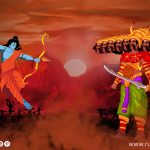



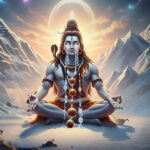
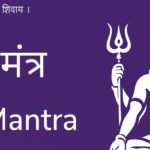
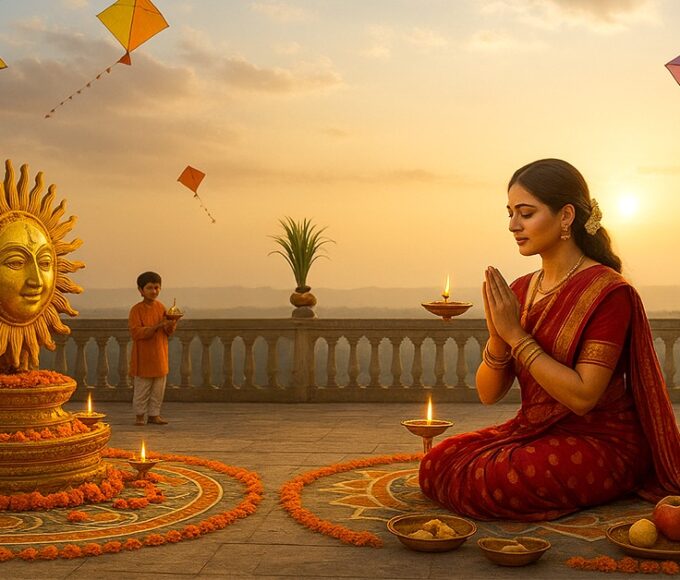
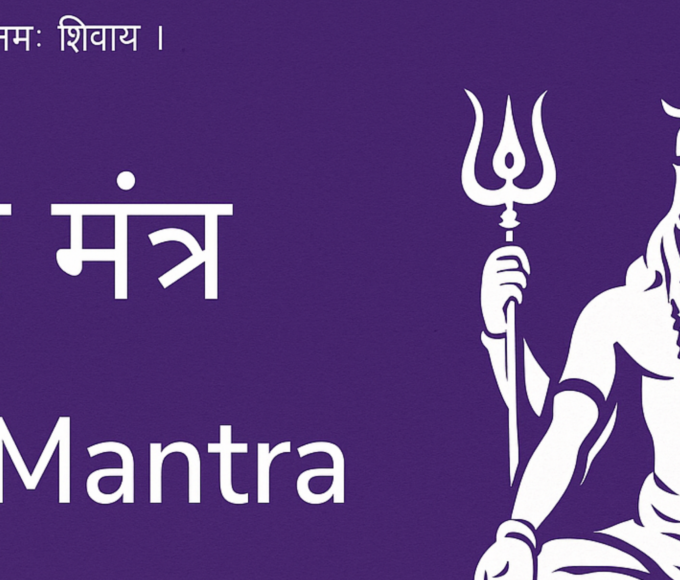
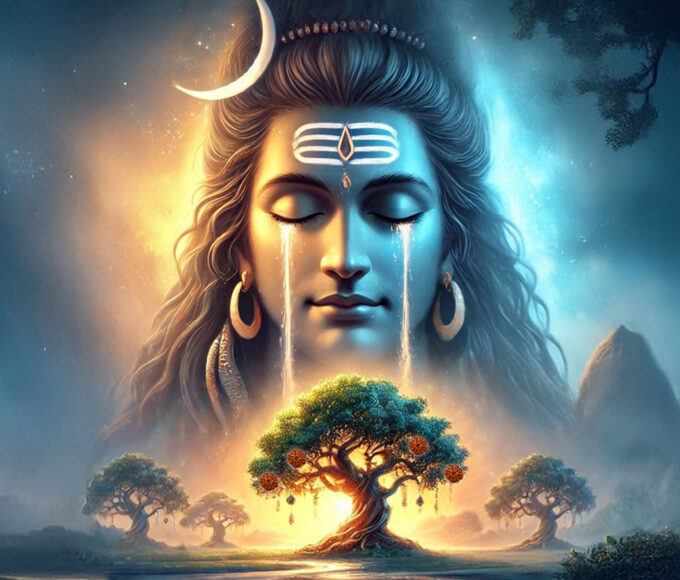
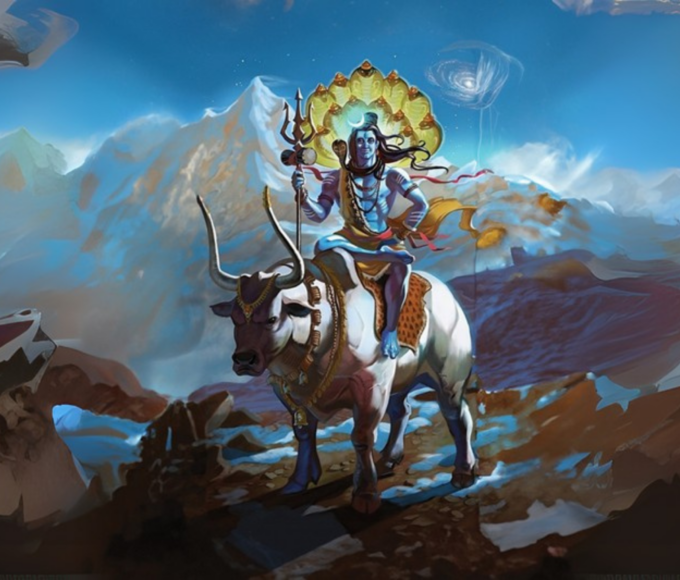
Leave a comment